New perk! Get after it with local recommendations just for you. Discover nearby events, routes out your door, and hidden gems when you sign up for the Local Running Drop.
If you haven’t heard the name Atreyu yet, you’re not alone. Launched back in 2020, amid the thick fog of the early pandemic, marathoner and two-time Ironman finisher, founder Michael Krajicek has somehow snuck out of the gate with a running shoe brand that has both rabid followers and very little marketing hype. So little, in fact, that this self-confessed (professed?) gear dude was completely clueless to their continued existence until two months ago, when a Team Triathlete member casually mentioned the brand in our membership Slack chat.
Embarrassingly, maybe I couldn’t see above the piles of Hokas and Sauconys and Under Armour shoes that I typically test—or more likely I was too busy testing and writing about bikes and smartwatches and wetsuits and…
But that’s part of the appeal of the small Austin-based brand with only two models of shoes, both of which run at or under $100. Though they have since ditched their very cool original subscription model, they remain simple, well-thought-out, and purposefully designed in a way that makes you wonder, “Why aren’t other brands doing that?” Without further ado, let’s dig into the shoes themselves.
RELATED: Building a Shoe Brand from Scratch
Atreyu Base Model: The Basics
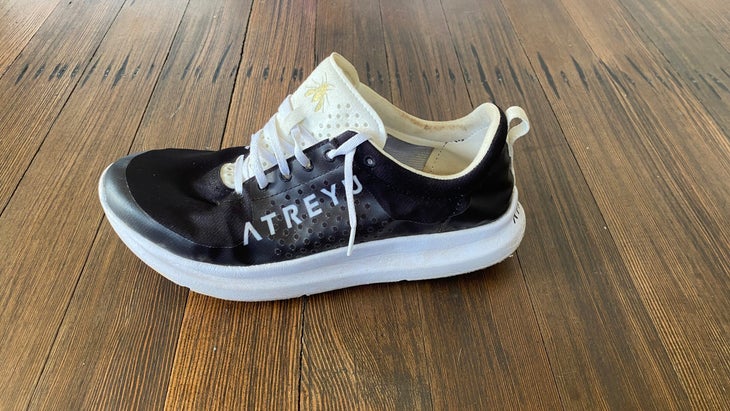
If you don’t read anything else in this review, know the simple facts around this shoe: It has a 6mm (15mm/21.5mm) stack height, it weighs about 6 ounces for a men’s size 9, they do not come in gender-specific sizes, and they are sans-outsole. In other words, the “Supercritical Foam” EVA misdole that runs throughout the entire shoe contacts the ground directly, much like Hoka’s Mach line or, more accurately Nike Frees.
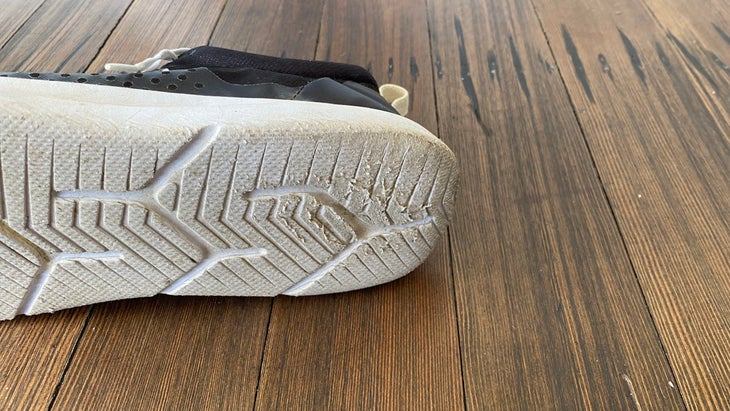
Moving from the ground up, it’s worth noting that the Base’s insole is glued to the midsole, and can be removed with a little elbow grease if you’re a fan of aftermarket insoles like Superfeet.
The good news is the inside of the upper is quite soft with trimmed edges and a soft insole that’s not too bad for sockless running if you want to go that route.The upper is close to one-piece, while the heel cup is incredibly flexible (more on that below), with a heel tab that feels pretty tri-friendly.
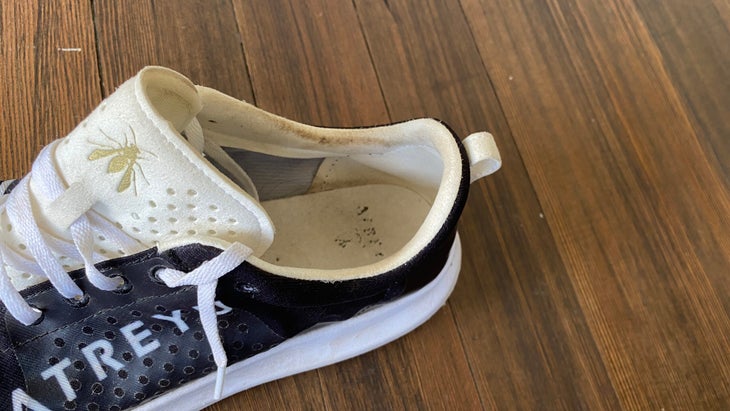
Atreyu Base Model: The Ride
I put this near the top because it’s one of the most distinct features of the Base model. Despite its fairly low profile, it’s a cushioned ride with a surprising amount of bounce. I expected something minimal that would really feel the ground (in a way I wouldn’t like), but instead I got a pretty substantial platform, despite the lack of any structure whatsoever. They felt bouncy and lively, and didn’t wear on my feet or legs on longer runs.
The most unusual part of this shoe, however, is the amount of movement from side to side I experienced—particularly around corners and on off-camber roads. Even when cinching down the laces super tight, my foot seemed to move above the platform in an odd way I’d rarely experienced. This made trails more than just tricky, and though it was slightly unsettling, it never actually caused any problems like a rolled ankle. In fact, after a first run of eight miles, I expected to be sore or experience tired feet from the fit, but my legs actually felt very very good. As I wore the shoes more, the “slipping” feeling subsided, and I was able to control it without much thought.
If I were to guess, I’d say the crazy flexible heel cup—like I’ve experienced on the old Nike Mayflys—was to blame, but aside from feeling weird, it never caused any actual problems while running or afterwards. And to be clear, there was no slipping on the outsole itself—except on trails, but that’s understandable given the lack of tread/outsole.
Atreyu Base Model: Overall Impressions
This was a shoe that I had literally no preconceived notions about before putting them on. I did know they cost $80, but that was about it. What I found was a super stripped down pair of shoes that were as light as a racing flat, but felt absolutely nothing like most racing flats I’ve tried. There was no harshness to this ride, in fact the Base model felt more like a high-stack pair of cushy trainers than anything minimal I’d worn before.
RELATED: Understanding Stack Heights in Running Shoes
In many ways, I actually appreciate the lack of an outsole because it allows you to truly evaluate your stride pattern (which is no accident, Atreyu did this intentionally) and actually see the way your midsole is wearing away in real time. I know I’ve had tons of shoes in the past that I wore for too long because the outsole showed little signs of wear, while the midsole was a collapsed mess. That said, I’d guess the Base model will wear out faster than most fully built trainers, but twice as fast? Probably not. If you compare the price of a outsole-d trainer to the Base model, you’re looking at roughly double, so really you’re getting your money’s worth in the end.
All of this is to say that Atreyu had a distinct, novel vision when it came to putting out the Base model, and they’ve executed it very very well. No, the base model doesn’t have much support, and yes, it will wear out faster than some other pairs of shoes (but not all!). Your mileage may vary on the volume/sliding issues I experienced, but the ride itself is noticeably well tuned, and that’s a hard thing to find—especially at six ounces and under $100.
Atreyu Artist: The Basics
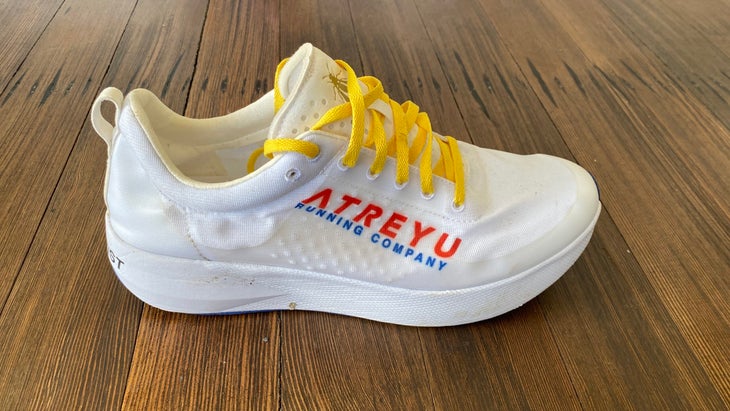
If there were ever two siblings who were dissimilar in appearance, but alike in virtues, Atreyu’s Base model and Artist would fall into those roles. The weight (somehow) remains the same as the Base model, and the stack is an epic 24mm/30mm, while still at 6mm of difference. From my best guess, the upper and insole on the Artist is also exactly the same as the Base model (what a genius way to save on cost, right?), but under the thick-a** midsole exists a super-thin, roughly 1mm outsole that covers about 40% of the bottom. The remainder? “Supercritical EVA” foam that makes up most of the midsole.
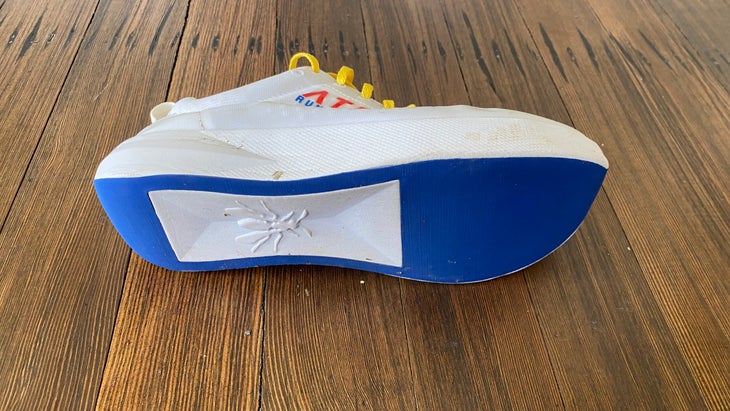
But here’s the big difference: Sandwiched between two layers of their energetic EVA midsole is a full-length carbon plate that provides much-needed structure on a shoe of this height, as well as propulsion and energy rebound. The Artist also has that soft interior and glued-in insole with a flexy heel cup and tri-friendly heel tab that makes this a fine choice for sockless running.
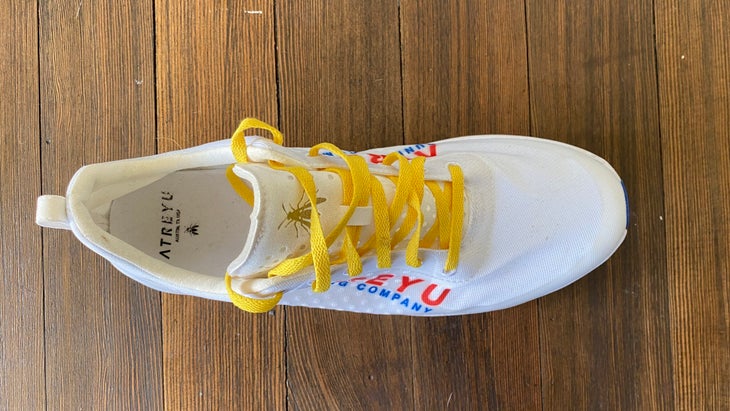
Atreyu Artist: The Ride
While there was a slight amount of that wild foot tracking in the Artists, it was distinctly less noticeable than the Base model. It could have been a function of getting more used to it, or maybe even a slight difference in manufacturing from shoe to shoe. Regardless, the Artist felt substantially more energetic than the Base model and slightly more cushioned on downhills. Again, the Base model surprisingly did not feel minimal in any way, but the Artist was decidedly more along the lines of what we expect in supershoes with a high stack height. That said, these were no marshmallows.
In terms of cadence and footstrike, like most carbon-plated shoes, the Artists definitely had a sweet spot. For me, it was at a mid- to high-cadence pace, where I was toward the front of my forefoot. This is not a pair of racers that necessarily punishes heel strikers—like some—but it certainly rewards those who are willing to really let their footstrike fall behind their center of mass. From the looks of the shoe, I expected more of a mid- to rear-strike zone, but it was in fact more energetic up front towards my toes. Once there, the propulsion felt natural and encouraging, rather than something that got away from me.
RELATED: Are Thicker Shoes Really That Much Faster?
Atreyu Artist: Overall Impressions
While I like the Base model, I loved the Artist. This is a shoe I would easily pay $150-plus for, and it makes sense that you shouldn’t be spending a ton for a pair of shoes you likely won’t wear as much as your daily trainers. The ride on this pair was as good, if not better than other good forefoot-friendly supershoes I’ve tested, like the Asics Metaspeeds or Saucony’s Endorphin Speed Pro 2s. And at half the price, it’s not a tough pill to swallow. If you’re a devout heel striker (and money is no object), you might be happier with the rebound of Hoka’s Carbon X or X 2, but even that’s a tough call.
At the end of the day, if you’re thinking about getting carbon-plated super shoes, but have been scared off by the price, it’s time to make the move. These shoes are substantially more energetic than “tempo trainers” that are technically their competition and still cost at least 50% more. The real question is: If The Artist cost another $80-120, would I buy them? Probably yes.
RELATED: What Makes Super Shoes Super?
